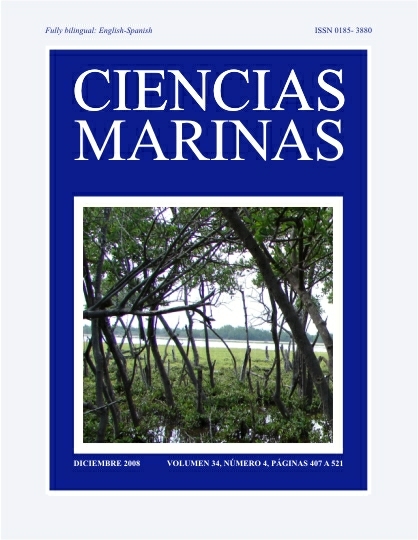DDT in sediments from the northwest coast of Baja California (Mexico) and its biotransformation by Vibrio sp.
Main Article Content
Abstract
During December 2003, sediment samples were collected at 20 stations along the northwest coast of Baja California (Mexico). Analyses of DDT were performed by gas chromatography, percentage of particles <63 μm in diameter, organic carbon, and sulphate-reducing bacteria. A bacterium from station 49, which showed the highest concentration of DDT and its metabolites DDE and DDD, was isolated and identified biochemically and molecularly to belong to the genus Vibrio. In the laboratory this bacterium was tested in minimal salts medium plus DDT and incubated at 28ºC under aerobic and anaerobic conditions for 90 days. In general, the sediments showed low concentrations of DDT, ranging from undetected to 4.78 ng g–1, and the highest concentrations occurred at the deepest stations containing higher percentages of particles <63 μm and organic carbon concentrations. The isolated Vibrio strain showed an ability to biotransform DDT under aerobic and anaerobic conditions, presenting the o,p′-DDE and o,p′-DDD metabolites after 60 and 90 days of incubation in both conditions.
Downloads
Article Details
This is an open access article distributed under a Creative Commons Attribution 4.0 License, which allows you to share and adapt the work, as long as you give appropriate credit to the original author(s) and the source, provide a link to the Creative Commons license, and indicate if changes were made. Figures, tables and other elements in the article are included in the article’s CC BY 4.0 license, unless otherwise indicated. The journal title is protected by copyrights and not subject to this license. Full license deed can be viewed here.

